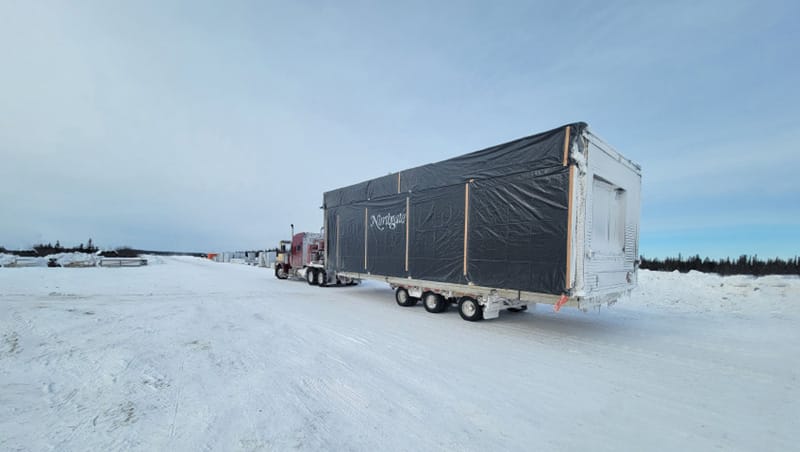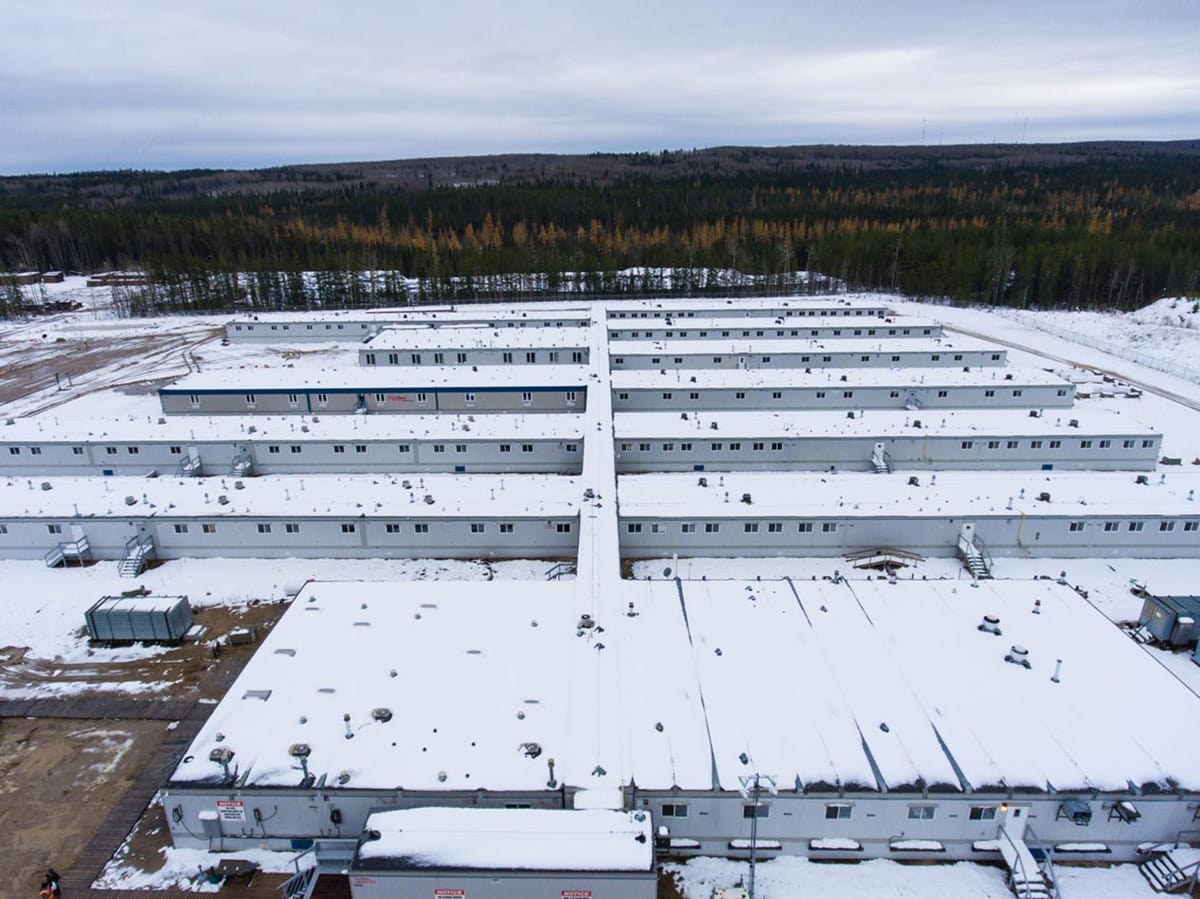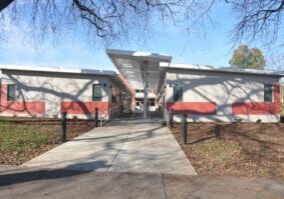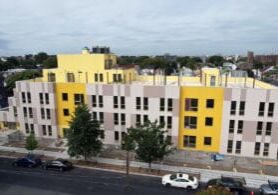Arctic Security and Sovereignty: The Role of Modular Structures

Ali Salman is the Director of Strategic Growth Marketing & Sales at Northgate Industries.
The Arctic, once considered a remote and largely inaccessible region, has now emerged as a critical geopolitical hotspot. As climate change accelerates the melting of ice, the Arctic is revealing new navigational routes and vast untapped natural resources, making it a focal point of global strategic interest. This article delves into the geopolitical dynamics of Arctic security, particularly for Canada and NATO, while also exploring how modular structures can play a pivotal role in enhancing security and sovereignty in this increasingly contested region.
The Strategic Significance of the Arctic
The Arctic holds approximately 13% of the world’s undiscovered oil and 30% of its undiscovered natural gas reserves, according to the United States Geological Survey (USGS). The melting ice has made these resources more accessible, sparking interest and competition from Arctic and non-Arctic states alike. For Canada, the Arctic is not only a resource-rich area but also a critical component of its national sovereignty. The Canadian government’s Arctic policy framework underscores the importance of asserting sovereignty and maintaining a strong presence in the region to safeguard its national interests.
NATO has similarly recognized the growing importance of the Arctic in its strategic concept. The alliance’s recent focus on the Arctic comes in response to the increasing military activities of Russia, which has been fortifying its Arctic presence with new bases, icebreakers, and advanced weapons systems. Russia’s ambitions in the Arctic, particularly its control over the Northern Sea Route (NSR), pose significant challenges to the security of the region, raising concerns among NATO members about the potential for conflict.

Northgate Industries transports modular units through Arctic terrain.
China, although a non-Arctic state, has also expressed interest in the Arctic, framing itself as a “near-Arctic state” and seeking to expand its influence through initiatives like the Polar Silk Road. China’s growing presence in the Arctic, including investments in infrastructure and partnerships with Arctic states, has added another layer of complexity to the region’s security dynamics.

During the Trident Juncture 2018 exercise, NATO employed modular units to provide logistical support in the challenging Norwegian Arctic environment.
The Strategic Significance of the Arctic
While the geopolitical challenges in the Arctic are immense, the physical environment of the region presents its own set of obstacles. The harsh climate, extreme weather conditions, and logistical difficulties make it challenging to establish and maintain a sustained presence in the Arctic. In this context, modular structures offer a practical and effective solution, providing the flexibility, speed, and resilience needed for operations in such a remote and hostile environment.
Rapid Deployment and Flexibility
Modular structures are prefabricated and can be rapidly deployed to remote locations, a crucial advantage in the Arctic, where traditional construction is hampered by extreme weather and limited building seasons. Northgate Modular, a leader in modular construction, has demonstrated that modular units can be assembled 30-50% faster than traditional methods, making them ideal for quickly establishing a presence in the Arctic.
Scalability and Adaptability
Modular structures are inherently scalable, allowing for the gradual expansion of facilities as needed. This flexibility is particularly beneficial for military and security operations, where the size and scope of missions can change rapidly. The ability to reconfigure or relocate modular units with relative ease ensures that operations can adapt to shifting geopolitical and environmental conditions.
Sustainability and Efficiency
The Arctic environment necessitates sustainable practices, and modular structures can be designed with energy-efficient systems that reduce the carbon footprint of operations. The use of insulated panels and renewable energy sources can significantly lower heating costs, which is a major consideration in the Arctic. According to the Arctic Institute, these energy-efficient designs can reduce energy consumption by up to 40%, making modular structures both economically and environmentally viable.
Cost-Effectiveness
The cost savings associated with modular construction are substantial, especially in the Arctic, where the logistical challenges of transporting materials and labor can drive up costs. A study by McKinsey & Company found that modular construction can reduce costs by up to 20% compared to traditional methods. These savings are particularly important for military and security agencies operating in the Arctic, where budgets are often constrained by the high costs of logistics and infrastructure.
Case Studies: Modular Structures in Action
Canadian Armed Forces (CAF)
The Canadian Armed Forces have utilized modular structures in several Arctic operations, demonstrating their practical benefits. The Nanisivik Naval Facility on Baffin Island is a key example. This facility, which supports the Royal Canadian Navy’s Arctic operations, was constructed using modular methods, allowing for rapid deployment and ensuring that the structure could withstand the harsh Arctic conditions. The facility serves as a critical logistics hub, enabling Canada to maintain a continuous presence in the region.

NATO Operations
NATO has also recognized the potential of modular structures in enhancing its operational capabilities in the Arctic. During the Trident Juncture 2018 exercise, NATO employed modular units to provide logistical support in the challenging Norwegian Arctic environment. This exercise highlighted the adaptability and resilience of modular construction, showcasing its value in supporting NATO’s strategic objectives in the region.
Security Agencies
Beyond military applications, modular structures are invaluable for other security agencies tasked with monitoring and responding to threats in the Arctic. The Canadian Coast Guard, for example, has used modular units to support search and rescue operations across the Arctic. These structures provide reliable, quickly deployable shelters, ensuring that personnel have the infrastructure needed to respond effectively to emergencies.
Geopolitical Implications of Arctic Security
The Arctic is becoming an increasingly contested region, with significant implications for global security. The growing interest from Russia and China, combined with the region’s vast natural resources and strategic maritime routes, has transformed the Arctic into a potential flashpoint for international conflict. For Canada and NATO, the challenge is to develop a security strategy that can effectively counter these threats while maintaining stability in the region.
The role of modular structures in this strategy is clear: they provide the infrastructure necessary to establish and sustain a presence in the Arctic. However, modular structures are just one component of a broader security framework that must also include military preparedness, diplomatic engagement, and international cooperation.
As the Arctic continues to warm and its resources become more accessible, the need for a coordinated and comprehensive approach to security in the region will only grow.
Modular structures, with their ability to rapidly deploy and adapt to changing conditions, will be a key element of this strategy, enabling Canada and NATO to maintain a strong and adaptable presence in the Arctic.
Conclusion
The Arctic’s evolving geopolitical landscape demands innovative solutions to complex security challenges. For Canada and NATO, maintaining sovereignty and security in the Arctic is not just a matter of national interest but a critical component of global stability.
More from Modular Advantage
Oregon’s Prevailing Wage Proposal: A Wake-Up Call for Modular Construction
Should House Bill 2688A become law, building projects would increase in price, face longer completion timelines, and produce significantly more waste. The bill also incentivizes contract awards to out of state businesses who would not reinvest their earnings into the local Oregon economy.
Behind the Design of Bethany Senior Terraces, NYC’s First Modular Passive House Senior Housing Project
As more developers seek to meet new regulations for energy efficiency, the team at Murray Engineering has set a new record. With the Bethany Senior Terraces project, Murray Engineering has helped to develop NYC’s first modular structure that fully encompasses passive house principles — introducing a new era of energy efficiency in the energy-conscious city that never sleeps.
How LAMOD is Using Modular to Address Inefficiency, Sustainability, and the Future of Construction
As developers, designers, and contractors seek to understand the evolving needs of the modular industry, no one is as well-versed in the benefits of going modular as Mārcis Kreičmanis. As the co-founder and CBDO of LAMOD in Riga, Latvia, Mārcis has made it his ultimate goal to address the inefficiencies of traditional construction.
From Furniture Builder to ‘Activist Architect’: Stuart Emmons’ Unique Journey
Stuart Emmons was fascinated by buildings at a young age. He remembers building sand cities with his brother during trips to the Jersey shore. His father gave him his first drawing table at the age of ten. Today, he is an experienced architect who received his FAIA in June 2025. The road he took is unique, to say the least.
Forge Craft Architecture + Design: Codes, Contracts, and Intellectual Property
Founding Principal and Director of Modular Practice for Forge Craft Architecture + Design, Rommel Sulit, discusses the implications of codes, contracts, and intellectual property on
modular construction.
Eisa Lee, the “Bilingual” Architect
Now as the founder of XL
Architecture and Modular Design in Ontario, Canada, she applies not just her education as a traditional architect but an entire holistic view on modular design. It’s this expansive view that guides her work on being a true partner that bridges the gap between architects and modular factories as they collaborate on the design process.
Tamarack Grove Engineering: Designing for the Modular Sector
The role of a structural engineer is crucial to the success of a modular project, from initial analysis to construction administration. Tamarack Grove offers structural engineering services — project analysis, plan creation, design creation, and construction administration — for commercial, manufacturing, facilities, public services, and modular. Modular is only one market sector the company serves but it is an increasingly popular one.
Engineer Masters the Art of Listening to His Customers
Since founding Modular Structural Consultants, LLC. in 2014, Yurianto has established a steady following of modular and container-based construction clients, primarily manufacturers. His services often include providing engineering calculations, reviewing drawings, and engineering certification
Inside College Road: Engineering the Modules of One of the World’s Tallest Modular Buildings
College Road is a groundbreaking modular residential development in East Croydon, South London by offsite developer and contractor, Tide, its modular company Vision Volumetric (VV), and engineered by MJH Structural Engineers.
Design for Flow: The Overlooked Power of DfMA in Modular Construction
Unlocking higher throughput, lower costs, and fewer redesigns by aligning Lean production flow with design for manufacturing and assembly.










